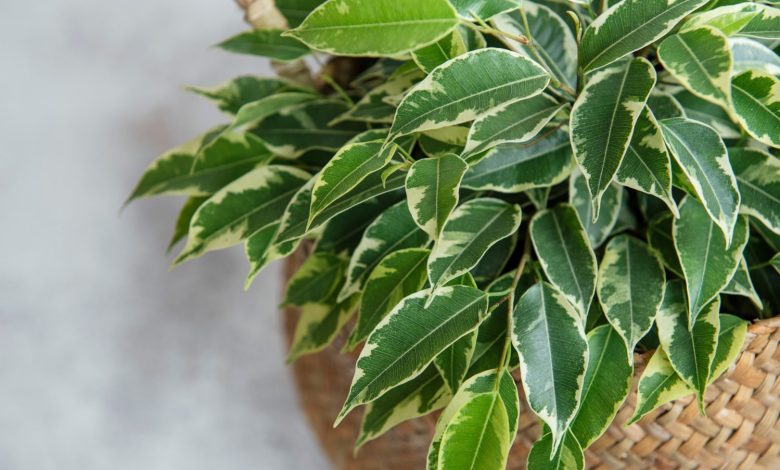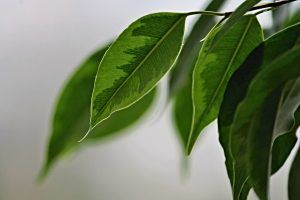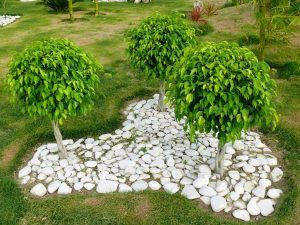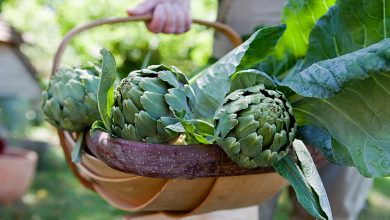How often and how to water my Ficus Benjamina?

 The ficus benjamina is an ideal species to fulfill ornamental functions, both indoors and outdoors.
The ficus benjamina is an ideal species to fulfill ornamental functions, both indoors and outdoors.
Its shape, size and characteristics of the leaves are very striking aspects that have managed to steal the hearts of many.
Taking care of it as it deserves is not a complex task, on the contrary, with the correct information you will see that it will not take up much time.
And as one of the most frequent doubts is related to the irrigation of ficus benjamina, here we will dedicate today’s post to just that topic.
Important points when watering a ficus benjamina:
- Irrigation frequency: once a week in spring and summer, once every fortnight in autumn and winter.
- Irrigation method: by gardening watering can.
- Optimum time of day for irrigation: in the morning or late afternoon.
- Identify excess water: decayed leaves that turn yellow, root damage.
- Identify lack of water: leaves that fall from the plant but without changing color.
What irrigation needs does the ficus benjamina have?
One of the greatest advantages of the ficus benjamina is that it is very undemanding when it comes to watering. In a very general way, we could say that it needs a moist substrate, but we must pay close attention to not getting waterlogged.
First of all, it is necessary to assess the level of perspiration that it is handling at a given moment, since the speed with which the substrate will dry depends on that.

The most normal thing is that it consumes a higher level of water when it is in full development and then stabilizes in the adult stage.
How can we detect lack of irrigation in the ficus benjamina?
 The ficus benjamina will present defoliation when it has a deficit in irrigation. It will be easy to define that it is due to this problem and not to excess because they will fall green.
The ficus benjamina will present defoliation when it has a deficit in irrigation. It will be easy to define that it is due to this problem and not to excess because they will fall green.
To correct the problem, water the plant thoroughly at the time you have assessed it for this problem.
Even if the problem is due to a water deficit, you should not flood the environment because it could make it worse. After that, continue watering at the regular frequency as you have set.
How often should we water the ficus benjamina?
Depending on the environmental conditions that are operating at all times, you will have to establish the best irrigation frequency. Most people who enjoy a ficus indoors apply a weekly watering during the spring and summer.
In autumn and winter, this frequency of irrigation moves away, being located in a watering every fifteen days. The important thing is that you learn to identify the specific needs of your ficus benjamina because not everyone works exactly the same.

But we do tell you that a good sign to define when you need irrigation is the state of the substrate. If you see it dry on the surface and you remove the soil a little with your fingers and it feels loose, it’s time to water.
What is the best way to water the ficus benjamina?
The irrigations of the ficus benjamina will be better if you do them with a gardening watering can that helps you provide the right amount of water. By having tiny exit holes, you ensure that the amount of water that the substrate receives is appropriate for it to absorb without complications.

Take into account that if the water reaches it very quickly, the soil will not be able to work at the same rate and will become waterlogged. And that will lead to another drawback, which is that you will think that it already has enough water and, most likely, it has not yet penetrated to the lower parts.
Therefore, the irrigation method must respond to slow water output and provide a small amount of liquid.

How do we detect excess water in the ficus benjamina?
Waterlogging will be a decisive issue in the health of the ficus benjamina because it does not tolerate it under any conditions. Being an ornamental plant, you will notice how its attractive and beautiful leaves begin to decay, leaving you with a sad specimen.
These leaves also turn yellowish, as if it were a kind of chlorosis.If the damage is not excessive at the root level, you will only have to let the substrate dry very well before applying a new irrigation.

But when the roots are very damaged or a fungus has nested, it may become an uphill task to bring your ficus benjamina back to life. For interior decoration, the ficus benjamina is one of the best alternatives, since it occupies relatively little space and is easy to care for.
In fact, the theme of irrigation and light are the two elementary cares so that it is fresh, lush and healthy throughout its life.
Maybe you are also interested in:



![Photo of The Acacia Tree: [Characteristics, Planting, Care, Irrigation and Substrate]](https://www.complete-gardening.com/wp-content/uploads/2022/08/the-acacia-tree-characteristics-planting-care-irrigation-and-substrate-390x220.jpg)
